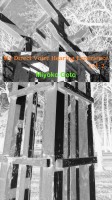Here is the list of how the Japanese regulation on radioactive contamination changed before March 17th and after. The water contamination regulation by WHO is 1Bq/L and now Japan got I-131 for 300Bq/L. 300 times difference. And the Japanese academics are saying that the contaminations on vegetables can be washed away if they wash it with water. They don't know how to make a logic of washing something in a mad and make it still got dirty. Oh, I forgot to mention Cs-137. The Japanese regulation is 200Bq/L. Well, if you drink 1L of water, you might get up to 300Bq/L contamination of I-131 and Cs-137 for 200Bq/L. I don't know about the WHO's regulation is accountable for each element. Perhaps, if you add the possibilities of other nuclear elements including plutonium, the contamination would go up to around 1000Bq/L as the total amount of the health risk. Of course, the government officials can say that infants in Tokyo can drink the tap water once or twice.
How about cultivating potatoes? They need to sterilized to prevent the sprouting, and the contamination can make one process reduced for the packaging. And maybe the products can be sold to China as the country has the population problem.
世界の水道水放射線基準値
●世界の基準値
WHO基準 1ベクレル(Bq/L)
ドイツガス水道協会 0.5ベクレ ル(Bq/L)
アメリカの法令基準 0.111ベクレル(Bq/L)●3/17までの日本の基準値
ヨウ素 I-131 10ベクレル(Bq/L)
セシウムCs-137 10ベクレル(Bq/L )●3/17以降・現在の日本の暫定基準 値
・ヨウ素(I-131)131 300ベクレル(Bq/L)
飲料水 300 Bq/kg
牛乳・乳製品 300 Bq/kg
野菜類 (根菜、芋類を除く。 ) 2,000 Bq/kg
・セシウム(Cs-137)137 200ベクレル (Bq/L)
飲料水 200 Bq/kg
牛乳・乳製品 200 Bq/kg
野菜類 500 Bq/kg
穀類 500 Bq/kg
肉・卵・魚・その他 500 Bq/kg(http://www.asyura2.com/11/genpatu10/msg/824.html)
















0 comments:
Post a Comment